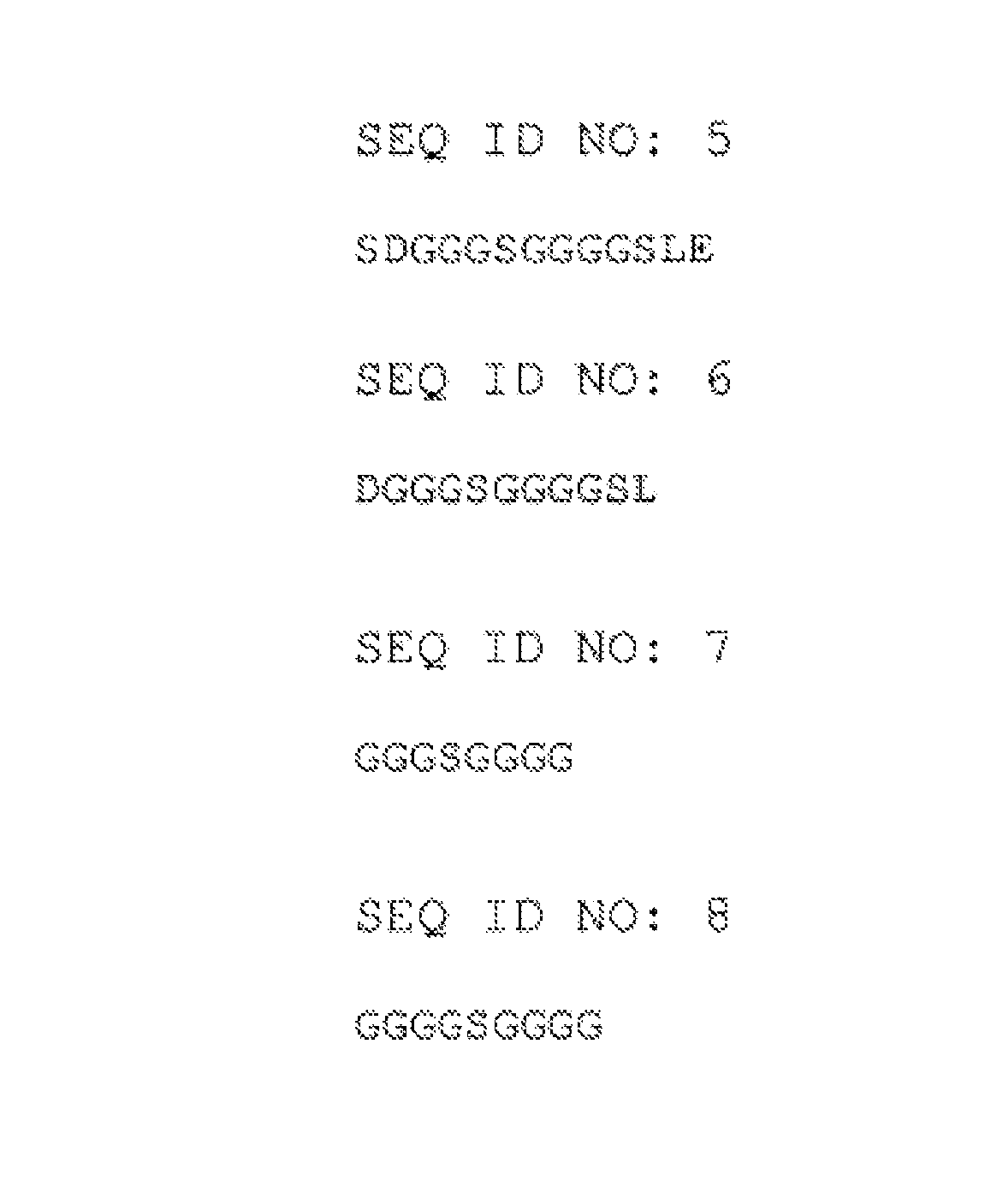Plasma cell cytokine vehicle containing fusion proteins for targeted introduction of siRNA into cells and tissues
a cytokine vehicle and plasma cell technology, applied in the field of gene product suppression, can solve the problems of difficult and impractical in vivo delivery, affecting the specificity and safety of sirna, and affecting so as to achieve the effect of decreasing the level of gene expression
- Summary
- Abstract
- Description
- Claims
- Application Information
AI Technical Summary
Benefits of technology
Problems solved by technology
Method used
Image
Examples
example 1
[0142]The invention features, generally, complexes comprising one or more inhibitory nucleic acids and a targeting polypeptide, where the targeting polypeptide consists of a cell surface receptor ligand.
[0143]In other examples, the complexes are modified. For example, the RNA binding portion of the complex is modified by reducing its size and / or increasing affinity. As described herein, His residues may be included in the constructs for analytical use and protein purification purposes; however these His residues are not necessary. Accordingly, certain constructs do not have His-tag. The exclusion of the His tag allows increased RNA binding affinity of the complex.
example 2
[0144]Experiments were also performed with antisense oligomers to interleukin-10 (IL-10) as part of complexes as described herein. In the same type of experiments as described above, it was found that antisense oligomers to IL-10 in a complex as described herein are effective to inhibit IL-10 expression.
example 3
[0145]Preparation of the ligand-histone-dsRNA complex is accomplished as described by (Yoshikawa et al. 2001). Complexes of ligand-lysine rich histone, the histone containing 24.7% (w / w) lysine and 1.9% arginine (w / w), with dsRNA is prepared by gentle dilution from a 2 M NaCl solution. Ligand-histone and dsRNA are dissolved in 2 M NaCl / 10 mM Tris / HCl, pH 7.4, in which the charge ratio of dsRNA:histone (− / +) is adjusted to 1.0. Then the 2 M NaCl solution is slowly dispersed in distilled water in a glass vessel to obtain 0.2 M and 50 mM NaCl solutions. The final volume is 200 μL and final dsRNA concentration is 0.75 μM in nucleotide units.
[0146]Preparation of the ligand-RDE-4-dsRNA-complex is accomplished as described by (Johnston et al. 1992), for the conserved double-stranded RNA binding domain which RDE-4 contains. Ligand-RDE-4 binding to dsRNA to is accomplished in 50 mM NaCl / 10 mM MgCl2 / 10 mM Hepes, pH 8 / 0.1 mM EDTA / 1 mM dithiothreitol / 2.5% (wt / vol) non-fat dry milk.
[0147]Prepara...
PUM
| Property | Measurement | Unit |
|---|---|---|
| temperatures | aaaaa | aaaaa |
| temperatures | aaaaa | aaaaa |
| temperatures | aaaaa | aaaaa |
Abstract
Description
Claims
Application Information
 Login to View More
Login to View More - R&D Engineer
- R&D Manager
- IP Professional
- Industry Leading Data Capabilities
- Powerful AI technology
- Patent DNA Extraction
Browse by: Latest US Patents, China's latest patents, Technical Efficacy Thesaurus, Application Domain, Technology Topic, Popular Technical Reports.
© 2024 PatSnap. All rights reserved.Legal|Privacy policy|Modern Slavery Act Transparency Statement|Sitemap|About US| Contact US: help@patsnap.com








